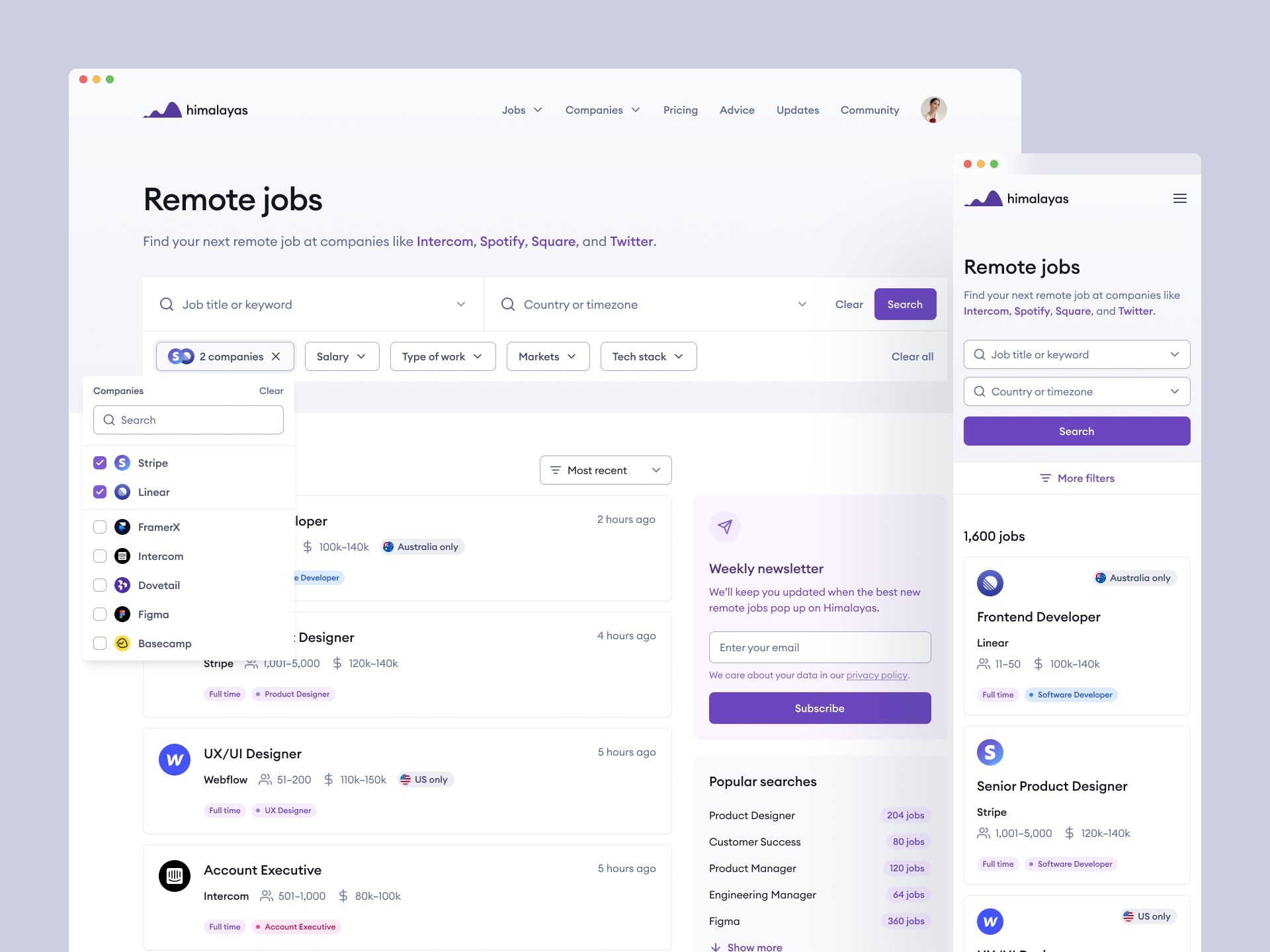Asynchronous communication happens when information is exchanged without the expectation of an immediate response. Message don't require the recipient's immediate attention, so they can process the information on their own time and respond at their convenience. Any form of written communication like email threads, messages, or documents can be examples of asynchronous communication.
But only if you treat the medium as async. Email has become the enemy of productivity and for good reason. A study conducted by Yahoo Labs found the most frequent email response time was two minutes.
Digital communication channels like Slack and Microsoft Teams are often no better. If someone sends a message and you're expected to respond in near real-time then you're not operating in an async environment. Digital communication tools are only as asynchronous as the people and culture that operate them.
Now that we understand what asynchronous communication is, let's dive into synchronous communication.

What is synchronous communication?
Synchronous communication happens when information is exchanged and responded to in real-time. It requires team members to be present at the same time and/or space. Examples of synchronous communication include phone calls, video conferences, and in-person meetings.
Synchronous communication vs. asynchronous communication
There are key differences between synchronous and asynchronous communication. The main difference is synchronous communication happens in real-time, making it faster and more dynamic. Conversely, asynchronous communication is independent of time, there is no need for people to be available at the same time or location.
Synchronous communication is great for active discussions needing an instant response, but typically reserved for team members who work in the same time zone or physical space.
Inversely, an async communication style is essential if you operate in a remote team. Finding a time that works across multiple time zones is near impossible. Not everyone can attend meetings and without written communication or recordings important information is lost.
In summary, synchronous communication involves real-time conversations while asynchronous communication is time-independent, so expect a time lag between responses.

The benefits of asynchronous communication
The benefits of asynchronous communication:
Increased productivity driven by deep work
Study after study after study has shown remote workers are more productive than their in-office colleagues. Many people attribute productivity gains to the time saved commuting and the avoidance of office distractions.
If you've ever worked remotely, you know instant messaging can be as, if not more, distracting than an office. So while skipping the commute and avoiding an open plan office are definite benefits, they're not the primary reason remote workers are more productive.
The real benefits of remote work become apparent when you adopt an asynchronous work environment. When your workday isn't broken up by countless meetings and constant instant messaging, you unlock hours of uninterrupted time to focus on deep work.
Deep work, a term coined by Cal Newport, is the ability to focus without distraction on a cognitively demanding task. This distraction-free concentration pushes your cognitive abilities to their limit and creates new value, improves skills, and is hard to replicate in our world of instant satisfaction.
Improved employee engagement and satisfaction
Deep work leads to better company outcomes and creates profound satisfaction for team members by enabling them to find flow. This in turn leads to more engaged employees. As psychologist Mihaly Csikszentmihalyi explains, people who are able to regularly access flow states “lead vigorous lives, are open to a variety of experiences, keep on learning until the day they die, and have strong ties and commitments to other people and to the environment in which they live.”

Lower stress levels and reduced burnout
The need to be online at specific hours on specific days means that employees don't have control over the structure of their workdays and the never-ending meetings associated with synchronous work mean people have to overcompensate for the time lost and work longer hours than they would in an async environment.
Async workplaces don't need to set hours and employees have control over how they structure their workdays, which leads to happier, healthier, and more productive employees.
Higher quality communication
Asynchronous work reduces the pressure to answer immediately, so communication tends to be of higher quality. Async communication is slower, so people tend to provide as much context as possible in each message to avoid unnecessary back-and-forth.
This gives the recipient the information and time to think through a particular problem or question and provide a thoughtful rather than instant response.
Easier to be honest
It's often easier to give more honest feedback when working asynchronously than in person due to the online disinhibition effect. While this can have its downsides, particularly when a message is misunderstood as more aggressive than it really is, the honest feedback it promotes is worth the trade-off. Always assume positive intent.

Better planning
Working asynchronously forces better planning. When you can't expect a message back in minutes, people learn how to manage their workloads better and plan ahead. This leads to a more well-run company, less stress, and higher quality work.
Documented by default
When communication relies on writing, meetings and important information are documented by default, particularly if you rely on an employee handbook or public documents over email. This has the added benefit of making information easier to share and find later, which improves decision-making.
Increased transparency
Asynchronous work relies on transparency as team members need to be able to find answers to their own questions when others are offline. This leads to more transparent workplaces that give employees access to as much as possible. Like being documented by default, increased transparency improves decision-making as everyone can make decisions based on access to the same information.

No time zone bias
An async communication style means you don't have to consider time zones when attracting, hiring, and onboarding remote employees which means you're not limited to a local talent pool. Distributed teams who reduce reliance on synchronicity and instead rely on asynchronous tools are more resilient, flexible, and able to hire the best person for the job regardless of location.
Improved inclusivity
Asynchronous work provides flexibility to people who need different things to work and collaborate successfully. For example, a single working parent might prefer to work start work late to drop the kids off at school, take a break for a few hours to pick them up and hang out with them, then finish their workday after the kids go to bed.

The disadvantages of asynchronous communication
Asynchronous communication also has disadvantages:
Lack of immediacy
Asynchronous communication can lack the immediacy that many managers crave. Interaction doesn't happen in real-time, which means there is a time lag between information exchange and decision-making.
Async communication means people might be unable to work until a team member has responded. This is why async teams rely on over-communication, emphasize writing, and default to transparency. It's also why remote companies look for employees who have a bias for action. It's essential to be able to continue to work instead of waiting for a response.
Requires exceptional communication skills
As Basecamp founders Jason Fried and David Heinemeier Hansson wrote in REMOTE: Office Not Required:
When the bulk of your communication happens via email and the like, it doesn't take much for bad blood to develop unless everyone is making their best effort to the contrary. Small misunderstandings that could have been nipped in the bud with the wink of an eye or a certain tone of voice can quickly snowball into drama.
Async communication only works if everyone has exceptional communication skills, particularly in writing. When you communicate over Google docs, project management tools, and asynchronous communication tools, it's easy to be misunderstood if you don't provide enough context. A few emojis can go a long way.

Requires more planning and patience
Asynchronous communication relies on patience and planning. People are forced to plan ahead and think through what they want to communicate ahead of time instead of sending a barrage of messages. This puts the onus on the sender rather than the recipient.
While this can lead to higher quality communication, better planning, and reduced stress, it also means that it isn't as easy to quickly solve urgent matters.
Loneliness
A common issue associated with remote work and async work is loneliness. Even the most introverted people need social interaction. Synchronous communication is filled with impromptu moments that break up the day and make work more fun.
That's why asynchronous companies need to encourage employees to use the flexibility enabled by async work to get out and socialize. It's easy to forget social interaction doesn't have to be limited to co-workers if you're used to working a regular 9-to-5. It's also why many remote companies have a co-working stipend.
Not everything can be asynchronous
Some things are better left to synchronous communication methods, particularly if they are urgent or sensitive. For example, one-on-ones or team-building events. It simply takes longer to build rapport and personal relationships without some form of real-time interaction. With that said, you'd be surprised how few things actually need real-time communication.

The benefits of synchronous communication
There are also a number of benefits to synchronous communication:
Easier to build trust
Synchronous communication makes it easier to build trust, have empathy, and make friends with colleagues. It's easier to trust someone when you know there's a real living, breathing human on the other side of a Slack message.
That's why remote companies like GitLab and Doist still organize one-on-ones and company retreats:
- One-on-ones: Meetings between a manager and a direct report and are the primary way of maintaining and deepening your relationship. The primary purpose of one-on-one is mutual teaching and information exchange but they are also a perfect forum to get at subtle work and personal problems that won't come up in writing.
- Company retreats: Many distributed teams organize quarterly or yearly team retreats so people can get together and connect at a personal level which makes async communication easier for the rest of the year.
Faster problem solving
Synchronous communication allows for faster iteration. Think about meetings where you leveraged real-time communication to brainstorm or solve a tricky problem. That's not something that is possible in an asynchronous environment.
Real-time communication lets team members address issues as they come up and get help on time-sensitive problems fast. With that said, many problems are better suited to deep work.

Natural breaks in the day
Working in an office or in the same time zone as your colleagues tends to create natural breaks in your day. Whether it's via distracting Slack message, tap on the shoulder, or just go grab lunch.
If you're planning to adopt an asynchronous communication style, it's best to build spaces for people to socialize and break up their days. Treat real-time social interaction as an important part of getting the job done.
A virtual space where employees can come together and communicate in real-time, whether that be on video or via text, can be as simple as a #watercooler channel in Slack or social groups focused on hobbies like a book club, gaming group, or anything in between.

The downsides of synchronous communication
While synchronous communication has great attributes, it also has downsides:
Constant interruptions
Synchronous communication disrupts focus. Harvard Business Review found employees are spending 50% more time collaborating than they were two decades ago and 80% of their workdays are spent communicating with colleagues.
Constant communication means the average knowledge workers spend far more time organizing their day around meetings, emails, and instant messaging than deep work.
Yes, getting an answer to your question in real-time is great but micro-interruptions impact focus. Research shows it takes 20+ minutes to get back into the task after an interruption.
Attention residue
Not only does it take time to get back to work, but distractions also split people's attention, making it harder to do meaningful work.
When you turn attention from one topic to another, the original topic leaves residue that reduces cognitive performance for a non-trivial amount of time. Attention residue is based on research pioneered by Sophie Leroy, an Associate Professor of Management at the University of Washington.
Attention residue can have a profoundly negative impact on knowledge worker productivity. The most high-value work you can do–coding, writing, design–is cognitively demanding and requires long periods of uninterrupted deep work.
Synchronous communication requires constant context switching and makes it impossible to find flow.

Poor documentation
While synchronous communication doesn't have to be synonymous with poor documentation it usually is. When you rely on real-time communication, it takes additional effort to document what will be and what was talked about.
This may seem fine but having a running log of all communication and decisions made at a company that can be referenced over time is incredibly powerful. It's particularly important when onboarding new remote employees.
Prioritizes connectivity over productivity
Synchronous communication prioritizes connectivity over productivity. When you spend half your day watching email and Slack, you don't have time to focus deeply. Not only that, the need to respond quickly means you don't have time to think through and formulate the best response.
To make matters worse, the rise of smartphones means that workplace communication is no longer limited to your desk or work hours. Most people can, and do, check email and respond to messages outside of work hours. As a result, we never fully clock off, which is a common remote work challenge.
Less freedom for employees
Beyond productivity issues, synchronous communication gives people less control over their schedules and is particularly tough on people who live in different time zones.
One of the most important remote work skills is time zone conscientiousness. Distributed teams need to be aware that real-time synchronous communication can negatively impact remote employee engagement.
If employees are unable to join the call, they can suffer from a fear of missing out (FOMO) and if they do need to work late to attend, it disrupts work-life balance.

Reduced access to global talent
When you rely on synchronous communication, you need to consider time zones when attracting, hiring, and onboarding remote employees. This limits your access to the global talent pool as you can only hire employees who can operate in the same time zone.
Hiring remote employees around the world gives you access to talented employees who don't live within commuting distance of your office. Good talent is everywhere and there's a high chance that the most qualified person doesn't live in the same city as you. While it's possible to get employees to relocate, the best talent now prefers remote teams over in-office roles.
The prospect of relocating away from your community and suffering through a long commute isn't appealing when you can work from home.
Promotes overworking and increases work-related stress
Gone are the days you can leave work at the office. Being constantly available means working all the time with no downtime for many people. Employees, particularly those with parent responsibilities, need work-life balance otherwise they will burn out.

Why we need both asynchronous and synchronous working
As you've learned, asynchronous and synchronous working have their own pros and cons. While async provides a number of productivity and work-life balance benefits, it also means that we miss out on the human connection that isn't easy to build in an async environment.
That's why many remote companies are predominantly async but still leverage synchronous communication too. For example, they might hold a quarterly or yearly company retreat that gets everyone together in-person to build personal connections. Company retreats are a great way to improve employee morale, increase engagement, and help async remote collaboration for the remainder of the year. It's easier to work productively async when you have a personal connection with colleagues.

When to use asynchronous and synchronous communication
While we recommend having a bias toward asynchronous communication, you'll get the maximum efficiency by balancing synchronous and asynchronous. Working asynchronously isn't the goal itself, rather it creates the space needed to work efficiently and makes synchronous moments more enjoyable.
Asynchronous work still allows for, and includes at appropriate moments, some synchronous discussion.
In general, leverage asynchronous work when the following is true:
- You want to give people space to work deeply
- You value flexibility and productivity over connectivity
- You don't need an answer urgently
- You can clearly articulate what you need from your team
- You are comfortable being transparent and sharing as much as possible
- You plan to rely on written documentation and recordings
- You want to hire remote employees all around the world
- You need to collaborate with people in different time zones
Similarly, it would make sense to choose synchronous communication when:
- You want to build rapport with people
- You need to provide critical feedback or discuss a sensitive topic
- You want to brainstorm different ideas and solutions quickly
- There are lots of moving parts and you want to get everyone on the same page quickly
- A crisis has happened that requires immediate attention

Asynchronous work best practices
There is no one-size-fits-all approach to async. Every organization is different and communication preferences will vary across companies. Not only that, the process of building a culture of asynchronous work takes time and requires the adoption of new tools, processes, habits, and most importantly culture.
Below are best practices you should follow as an individual and as a team.
Asynchronous work best practices for individuals
- Over-communicate: When you send a message, ask for feedback, or ask a question, provide as much context as possible. Link any additional reading materials, Figma files, or record a Loom. Do whatever it takes to provide as much context as possible. The few extra minutes you invest could save days of back-and-forth.
- Assume positive intent: When you're working async, it can be easy to read into a message and assume that someone is annoyed with you or angry at your feedback. Always assume positive intent, chances aren't they aren't! If you're still unsure, seek clarification.
- Learn to ask good questions: While there's no such thing as a stupid question, there are unproductive questions that could be phrased better for the recipient. When working remotely, invest time upfront when asking questions and aim to provide people with sufficient context. Identify places where you've made assumptions and try to preempt any follow-up questions.
- Learn to write well: Most async teams rely on written documentation. Writing well is foundational to being a successful async worker. A good place to start is with Julian Shapiro's guide to writing well.
- Plan ahead and give people ample time to respond: Don't ask for feedback on something you need to release in the next hour. You need to build slack in your schedule to give people ample time to provide feedback and for you to adjust your work based on the feedback they provide.
- Always check document sharing settings: Ideally, your company will set up your Google Drive, Dropbox, or other file-sharing system so files are automatically shared with everyone at the company by default. If not, make sure you grant access to recipients ahead of time. If someone needs to request access, it can be hours or days of delay.
- Write memos before meetings: Writing a memo before a meeting can help attendees know what to expect and how they should prepare for a meeting. You may even find that often a memo is enough on its own and no meeting is necessary.
- Record all meetings, document minutes, and share outcomes: Meeting attendance should be optional when working asynchronously. In fact, you should assume people won't be available and record all meetings. Recording meetings reduces FOMO and allows key individuals to catch up on what was discussed if they were unable to attend. Writing up minutes and sharing them provides additional context and makes the decisions easier to find later. Words are easier to search than videos.
- Turn off notifications: Every notification you check and feed you aimlessly scroll through makes it harder to work deeply without distraction for long periods of time. Fewer distractions mean less chance that your phone or computer hijacks your attention and introduces attention residue.
- Default to transparency: Working in public is the best way to ensure everyone is on the same page. Give people access to as much as possible so they can find information themselves. Always communicate in public unless it's sensitive or personal, you never know who else could benefit from being aware of what you're working on.
- Default to action: When you're working async, you need to use waiting time productively. Successful async workers always have something else to work on, even when blocked on their main priority.
- Be time-zone flexible: When you work with people in different time zones, you need to think about when to send a message and learn not to reply to every notification when you're not working.
- Create friction when people attempt to schedule meetings: Push back on times that don't work, block off your calendar when you are most productive, and always ask if a meeting can be a document instead.

Asynchronous work best practices for teams
- Create an employee handbook: An employee handbook is the central repository of how you run the company. It should contain the company's vision, culture, working norms, legal policies, and anything else a new or existing employee would want to know. GitLab and Basecamp both have great examples.
- Establish a North Star metric, KPIs, and goals for your team to focus on: A North Star metric is the one measurement that's most predictive of a company's long-term success. Once you have that, teams and individuals can develop their own KPIs and goals.
- Be patient during the transition: Making the shift from synchronous to asynchronous work is a challenging and iterative process that won't happen overnight. However, the benefits it unlocks for employers and employees are worth the effort.
- Limit the number of internal meeting hours per week: Not only will this increase productivity and encourage deep work, but it'll also make the meetings you do have more valuable and efficient. Attendees will be more engaged, alert, and motivated to use their time wisely.
- Make meetings optional: When working async, the usual assumptions about availability are opposite to the norm. You need to assume that people aren't available to attend. Make everyone record all meetings, take notes, and share them so people can catch up on what they missed.
- Promote writing and communication as core skills to master: Most async and remote teams rely on written documentation as it reduces the burden on team members in different time zones to be available. It also reduces the fear of missing out as people know important information will be documented. A good place to start is with Julian Shapiro's guide to writing well.
- Evaluate people based on output not hours: Knowledge work isn't like manual labor, more hours in does not equal more output. Give people time to relax and unplug if you want to increase employee engagement and productivity.
- Let people work when and where they want: Hiring remote employees around the world forces you to move toward more asynchronous work and it has the added benefit of allowing you to hire the best person for the job, regardless of location. Best of all, you'll build a more diverse, inclusive, and performant company culture.
- Emphasize work-life balance, independence, and accountability: Asynchronous work only works if you have these values. If you don't promote work-life balance, people tend to overcompensate not being in the office and working constantly. If you don't value independence, people will wait for the answer instead of finding the answer themselves. And if you don't value accountability, people will worry that others won't keep their word and insist on synchronous communication.
- Adopt the single-threaded leader model for management and decision-making: Single-threaded leadership is an idea from Amazon where a single person is 100% dedicated and accountable to the success of a specific product or initiative. Another way to phrase this, which was made popular by Apple, is a Directly Responsible Individual (DRI). While it's rare that only one person will be working on a project, it is up to the DRI to get it done or find the resources needed. The more you can decentralize decision-making, the faster and more asynchronous your company can move.
- Set reasonable company-wide expectations around response times: Async companies can't expect people to respond in 2 minutes but 7 days is equally unacceptable. Doist expects people to answer within 24 hours.
- Make transparency a priority: Working in public is the best way to ensure everyone is on the same page. Give people access to as much as possible so they can find information themselves. Bias to communicating in public unless it's sensitive or personal, you never know who else will benefit from reading the message.
- Leverage tools that promote transparency, deep work, and async communication: At Himalayas, we use Linear for issue tracking, Figma for design, Google Docs for written documentation, and WhatsApp to communicate internally. We have no internal email, which means nothing is ever lost in someone's inbox and everyone always has access to the information they need.
- Have a real-time communication channel for emergencies: We use WhatsApp as our primary communication channel and have each other's phone numbers too, but I can't think of a time when we've needed to call each other. Most things aren't urgent enough to warrant an immediate response.
- Invest in onboarding: Onboarding employees well has a number of benefits: better employee retention, increased productivity in less time, reduced anxiety, and it sets expectations. We've got a full guide on remote onboarding if you're interested.

Asynchronous communication tools
There are a number of tools you can adopt to collaborate asynchronously:
- Google Drive: Google Drive is a prime example of an asynchronous tool. It allows you to work on documents, spreadsheets, and presentations in separate times and places. Its in-built collaboration tools and auto-saving make it a great tool to use in an async environment.
- Slack: Slack is a popular messaging app that can be used as an asynchronous communication tool but only if you adopt the right practices. For Slack to be async, you need to not feel the need to respond instantly. Otherwise, it can become extremely distracting.
- Loom: Loom lets you quickly record videos on your screen and cam and automatically uploads them. It's often easier to explain your points and give feedback over video than text, particularly if you're trying to explain a UI bug. It also integrates with Slack for an even easier sharing experience.
- Notion: Notion is an all-in-one workspace that can be customized to work the way you do. In Notion, your work and knowledge base are one which makes it easier to not lose context.
- Tettra: Tettra is an internal knowledge base that organizes company knowledge so that employees can find the answer to their questions. It also integrates with Slack and Microsoft Teams so your team can find the answer to repetitive questions without leaving Slack/Teams.
- Slab: Slab is a knowledge hub that encourages asynchronous learning and skill sharing. It allows people to find information about your company, teams, and projects by indexing your company's tools and integrations. It also allows people to edit files in real-time with other users.
- Asana: Asana is a project management tool that can be leveraged for asynchronous communication. With Asana, you can build out projects and deadlines and then assign the work to teammates. Teammates can then communicate at their own pace on project-specific boards.
- Linear: Linear is an issue-tracking tool that you'll enjoy using. It can help streamline software projects, sprints, tasks, and bug tracking. It's also a beautifully designed product that focuses on speed.
- Twist: Twist is an async messaging tool for teams that are burned out by real-time, all-the-time communication. It's built for async work with no monitoring presence indicators, no notification dots, and no real-time chat.
- Monday.com: Monday.com is a virtual work hub that allows teams to communicate and collaborate asynchronously. It provides visibility into all areas of a project and integrates with heaps of other tools. You can even leverage its in-built automation to automate routine processes so you can focus on what matters.

Find a remote job on Himalayas
If you've read this far there's a good chance that you're either looking to find a remote job or are already working remotely.
Either way, we'd love to introduce ourselves. We're Himalayas, a remote job board, that is focused on providing the best experience for remote job seekers. Check out our remote jobs or remote company database if you're interested.







